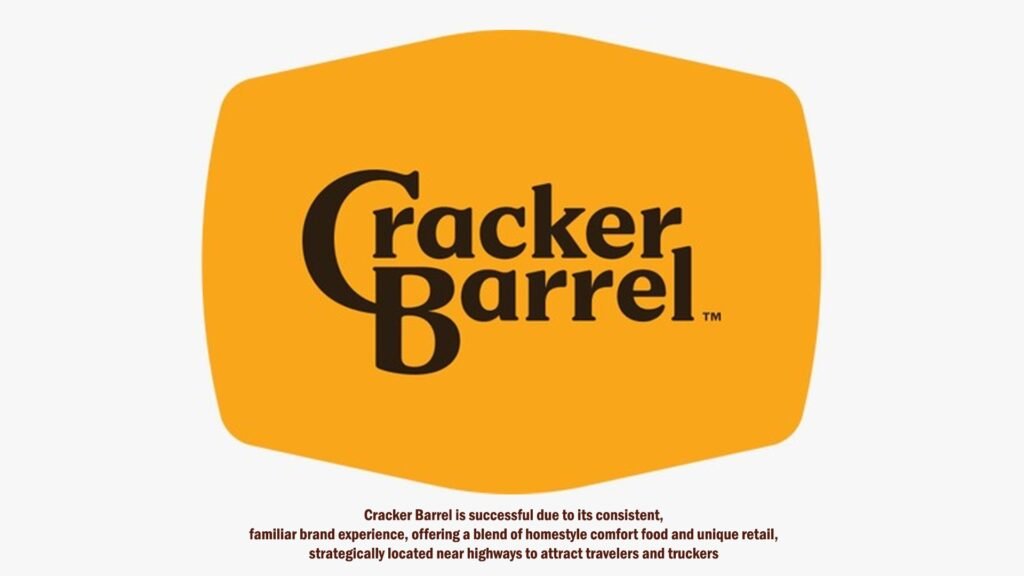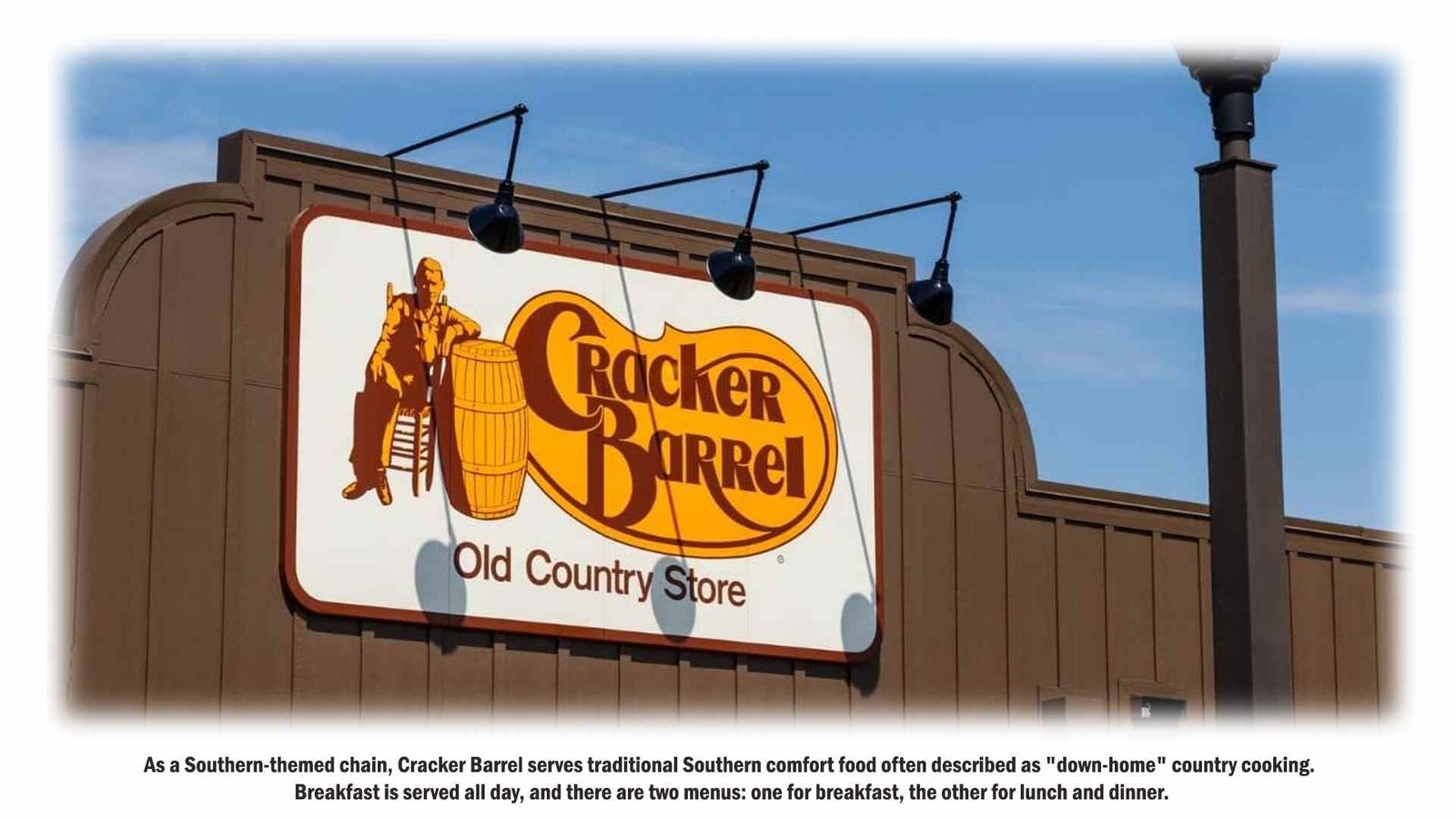The Cracker Barrel logo change controversy has sent shockwaves through both Wall Street and social media, proving that sometimes even the smallest brand modifications can trigger massive backlash. When the beloved restaurant chain announced its decision to abandon its iconic 48-year-old logo featuring “Uncle Herschel,” customers and investors alike responded with unprecedented criticism.
The Heart of the Cracker Barrel Logo Change Controversy
The Cracker Barrel logo change controversy began when the company unveiled its simplified new design, eliminating the cherished illustration of an overall-wearing man leaning against a barrel. This decision marked the end of nearly five decades of brand consistency, replacing the nostalgic imagery with a cleaner, text-focused approach that many customers perceive as soulless.
What makes this Cracker Barrel logo change controversy particularly significant is the emotional connection customers had with the original design. The man in overalls, affectionately known as “Uncle Herschel,” represented more than just branding – he symbolized the authentic country store experience that defined the restaurant’s identity since its founding.
Financial Impact of the Cracker Barrel Logo Change Controversy
The immediate market reaction to the Cracker Barrel logo change controversy was swift and brutal. Company shares plummeted 7.2% in a single day, wiping out approximately $94 million in market value. This dramatic stock decline demonstrates how brand loyalty translates directly into investor confidence and financial performance.
The severity of the Cracker Barrel logo change controversy became evident when stock prices dropped to $50.27 during Thursday trading, representing one of the most significant single-day losses the company has experienced in recent years. While shares recovered slightly on Friday, the damage to investor confidence remains a concerning indicator of customer sentiment.
Customer Response Fuels Cracker Barrel Logo Change Controversy

Social media platforms exploded with criticism as the Cracker Barrel logo change controversy gained momentum. Long-time customers expressed feelings of betrayal, arguing that the company had abandoned the very essence of what made Cracker Barrel special. Many described the new logo as generic, corporate, and disconnected from the brand’s rural, homespun identity.
Conservative commentators amplified the Cracker Barrel logo change controversy by framing it as another example of corporate “wokeness,” though marketing experts suggest this political interpretation oversimplifies what is fundamentally a branding misstep. The controversy highlights how politically charged the current marketing environment has become.
Expert Analysis of the Cracker Barrel Logo Change Controversy
Marketing professionals have offered mixed perspectives on the Cracker Barrel logo change controversy. Some experts argue that the old logo was overly complex and needed modernization, while others warn that abandoning beloved brand elements risks alienating core customers who feel emotional ownership of the brand.
Brand strategist Kelly O’Keefe noted that in normal circumstances, such logo updates rarely generate significant attention. However, the current politically charged climate has transformed the Cracker Barrel logo change controversy into something far beyond typical marketing criticism.
Kevin Dahlstrom, founder of Bolt Health and former CMO in the financial sector, described the situation as a marketing “fiasco,” emphasizing that companies should never abandon brand elements that generate genuine customer emotional investment.
The Broader Context Behind the Cracker Barrel Logo Change Controversy
The Cracker Barrel logo change controversy represents part of a larger strategic overhaul aimed at modernizing the 55-year-old chain. Under CEO Julie Felss Masino’s leadership, the company has been working to refresh its image through updated menu offerings and store redesigns that move away from the traditional “old-timey” aesthetic.
This modernization effort, while potentially necessary for long-term growth, has contributed to the intensity of the Cracker Barrel logo change controversy. Customers who visit Cracker Barrel specifically for its nostalgic atmosphere view these changes as fundamental alterations to the brand’s core identity.
Financial Performance Context
The Cracker Barrel logo change controversy comes at a challenging time for the company financially. Revenue growth has slowed significantly compared to the explosive expansion of the 1990s, with 2024 revenue reaching $3.5 billion – only a modest 0.8% increase from the previous year.
More concerning, net income declined substantially from $99 million in 2023 to just $40.9 million in 2024. These financial pressures likely influenced management’s decision to pursue modernization, inadvertently triggering the current Cracker Barrel logo change controversy.
Company Response to the Controversy
In response to the Cracker Barrel logo change controversy, company representatives attempted to reassure customers that core values remain unchanged. They emphasized that Uncle Herschel will continue appearing in restaurants and on menus, suggesting the logo change affects only external marketing materials.
However, this explanation has done little to calm the Cracker Barrel logo change controversy, as many customers view the logo as the primary representation of the brand’s identity. The company’s August 18 press release describing the new design as “rooted even more closely to the iconic barrel shape” has been met with skepticism from critics.
Lessons from the Cracker Barrel Logo Change Controversy
The Cracker Barrel logo change controversy offers valuable insights for other companies considering brand modifications. It demonstrates that customer emotional attachment to brand elements can be far stronger than corporate leadership anticipates, particularly for companies built on nostalgia and tradition.
The controversy also illustrates how modern social media amplifies customer dissatisfaction, transforming what might have once been localized complaints into national news stories that directly impact stock prices and investor confidence.
Long-term Implications
As the Cracker Barrel logo change controversy continues to unfold, the company faces a critical decision: maintain the new direction despite customer backlash or consider reverting to elements of the original design. The financial and reputational costs of this controversy may ultimately exceed any potential benefits from modernization.
The Cracker Barrel logo change controversy serves as a cautionary tale about the risks of abandoning brand elements that customers view as integral to company identity. In an era where authentic connections between brands and consumers are increasingly rare and valuable, Cracker Barrel’s experience demonstrates why preserving customer emotional investment should be a top priority in any rebranding effort.
This controversy will likely influence how other traditional brands approach modernization, highlighting the importance of extensive customer research and gradual implementation when modifying beloved brand elements.
Must Read: Judge Frank Caprio Dies at 88: Beloved ‘Caught in Providence’ Star Loses Cancer Battle




